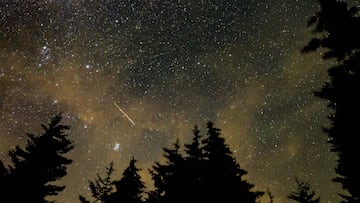Quadrantid meteor shower: When is the best time to watch the first shooting stars of 2023?
Star-gazers will be hoping to see the annual phenomenon when a shower of meteors passes through the night’s sky later this week.

The first shooting stars of 2023 are set to light up the night’s sky later this week as part of an annual astronomical event. A meteor shower known as the Quantrantids will be visible in the next few days, but a very bright moon will make the shooting stars less defined.
Every year, between 26 December and 16 January, an asteroid called 2003 EH makes its presence known in the night’s sky. The asteroid orbits the sun once every five years and its exact time of visibility varies between years, but often peaks between 3 – 4 January.
Only visible from the northern hemisphere, it is one of the strongest meteor showers. At its peak there are thought to be around 125 shooting stars per hour, but this year only around 25 of that number will be clearly visible.
The best time to see the showers, given that we are in the northern hemisphere’s winter, will likely depend on when cloud coverage allows. However, the American Meteor Society have rejected that the peak of meteor activity will occur on Wednesday, 4 January at around 3:40am Universal Time (UTC).
In the United States, this equates to 10:40pm (ET) or 8:40pm (PT) on Tuesday, 3 January.
Full moon could affect visibility
But even the most keen-eyed star-gazers may not have much luck spotting the Quantrantid meteor shower this year. The peak of visibility is expected to be around 3 or 4 January, but a full moon will take place just two days later.
This means that, at the point with most shooting stars, a bright waxing gibbous moon of 94% illumination will be lighting up the night’s sky.
Meteor showers, like most astronomical phenomenon, shows up better against a deep black sky. The full moon will brighten all around the shower and make it more difficult to spot the annual event.






